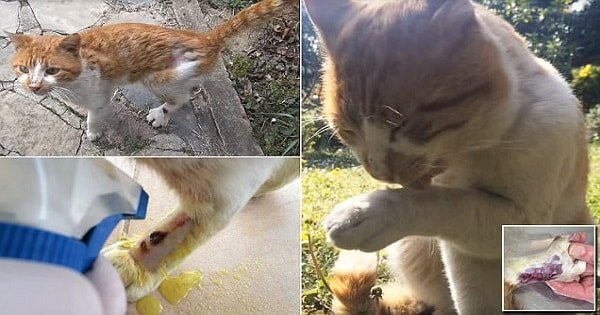A unique medical case in the UK has shone a spotlight on the potential dangers of feline bites, leading to the discovery of a previously unidentified bacterium. A 48-year-old man experienced severe complications following an encounter with a stray cat, culminating in a significant medical investigation.
The Case of a Mysterious Infection
The incident, detailed in a recent issue of the journal Emerging Infectious Diseases, occurred when a 48-year-old obese man reported to an emergency department in 2020. He presented with swollen hands and multiple puncture wounds, attributed to a bite from a feral cat around eight hours prior. What followed was an unexpected journey through a previously uncharted area of infectious diseases.
A team of researchers, including specialists from Cambridge University Hospitals, uncovered a novel bacterium within the genus Globicatella. This organism was responsible for a significant soft tissue infection in the patient. Such discoveries underscore the necessity of recognizing cats as potential carriers of unknown pathogens and their ability to transmit zoonotic infections to humans through deep bite wounds.
Treatment and Recovery: A Multi-Faceted Approach
The patient received initial treatment that included an updated tetanus vaccine and a series of oral antibiotics. Despite these measures, he was readmitted 24 hours later with worsening infections in his fingers. The medical response escalated to surgical intervention to remove the infected tissue and the administration of a combination of intravenous antibiotics. This aggressive treatment approach proved successful, and the patient recovered.
Further analysis of the infection, particularly the swabs from the man’s right middle finger, revealed a bacterium resembling Streptococcus, commonly associated with various infections from strep throat to meningitis. However, this microbe’s genetic sequence revealed it was an undocumented strain, marking it as a new, distinct species within the Globicatella genus.
Experts emphasize the importance of awareness regarding the risk of secondary infection from cat bites, which can introduce saliva directly into deep tissue. The findings from this case not only illuminate the hidden dangers of animal bites but also expand our understanding of the myriad of bacteria yet to be identified that can impact human health.
This case highlights the crucial role of prompt and thorough medical treatment following animal bites and the ongoing need for research into the complex interactions between humans and the lesser-known aspects of the animal kingdom.









